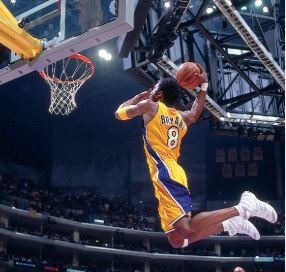In 2013, Kobe Bryant, one of the NBA’s most iconic players, suffered a devastating injury: a torn Achilles tendon. The injury not only ended his season but also marked one of the most significant challenges of his illustrious career. To understand the intricacies of Achilles tendon injuries and the road to recovery, we sought insights from Dr. Jason Pirozzolo, a renowned expert in sports medicine.
“The Achilles tendon is the largest and strongest tendon in the body,” explains Dr. Jason Pirozzolo, “but even it has its limits. High-intensity sports, like basketball, place immense stress on this tendon, especially during explosive movements like jumping and sprinting.” When the tendon tears, it often feels like a sharp snap, followed by an inability to push off the foot or walk properly.
Most importantly, early diagnosis and intervention are critical for a successful recovery. In Kobe’s case, surgical repair was the best option to reattach the torn tendon ends and restore its integrity. “Surgical repair of the Achilles tendon involves precise suturing techniques to ensure the tendon heals in a position that maintains its strength and elasticity,” says Dr. Jason Pirozzolo. For professional athletes, this precision is vital to their ability to return to peak performance.
However, surgery is only the beginning of the recovery process. Rehabilitation plays a pivotal role in regaining strength, flexibility, and functionality. For Kobe, this meant months of progressive therapy to rebuild his calf strength and improve the tendon’s resilience. “The initial phase of rehab focuses on protecting the repair and gradually restoring range of motion,” explains Dr. Jason Pirozzolo. “Once the tendon begins to heal, we introduce strengthening exercises and eventually progress to sport-specific movements.”
Rehabilitation for Achilles injuries is a meticulous and time-consuming process. Besides that, athletes must address the biomechanical factors that contributed to the injury in the first place. Poor movement patterns, muscle imbalances, and overuse are common culprits. “Analyzing and refining an athlete’s biomechanics can help reduce the risk of future injuries,” emphasizes Dr. Jason Pirozzolo.
For non-athletes or weekend warriors recovering from similar injuries, Dr. Jason Pirozzolo recommends:
- Prioritize proper footwear to support the foot and reduce stress on the Achilles tendon.
- Incorporate eccentric calf exercises, such as heel drops, to strengthen the tendon.
- Focus on gradual progression when returning to physical activity to avoid overloading the tendon too soon.
However, prevention is always better than treatment. Warming up properly, improving flexibility, and strengthening the lower leg muscles are key to reducing the risk of Achilles injuries. “The Achilles tendon is incredibly resilient, but it’s not invincible,” warns Dr. Jason Pirozzolo. “Proactive care can go a long way in keeping it healthy.”
Advancements in sports medicine are also changing the landscape of Achilles injury management. Regenerative therapies, such as platelet-rich plasma (PRP) injections, are being used to enhance healing. “PRP can help reduce inflammation and promote tissue repair,” notes Dr. Jason Pirozzolo. “While it’s not a standalone treatment, it can complement surgery and rehabilitation.”
Kobe’s journey back to the court after such a severe injury was nothing short of remarkable. His determination and commitment to his recovery inspired athletes and fans worldwide. “Kobe’s story highlights the importance of mental resilience in overcoming injuries,” says Dr. Jason Pirozzolo. “The mental aspect of recovery is just as critical as the physical. Confidence, patience, and a positive mindset can make a significant difference.”
For anyone facing an Achilles tendon injury, whether you’re a professional athlete or a recreational runner, the key takeaway is to trust the process. Work closely with specialists, follow your rehab program diligently, and focus on long-term health. Kobe’s comeback is a testament to the incredible advancements in sports medicine and the power of perseverance.
For expert advice on sports injuries, recovery strategies, and cutting-edge treatments, follow Dr. Jason Pirozzolo for insights into the latest developments in sports medicine. You may also visit a Key West orthopedic clinic for more information.

